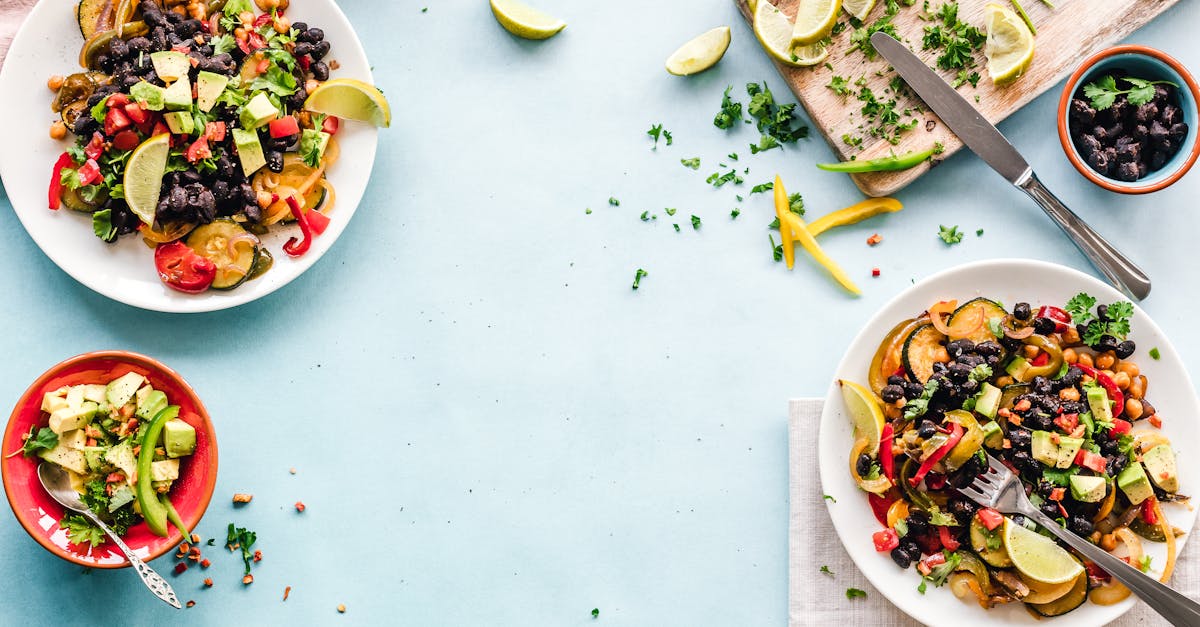Uncover the mysterious allure of South American flavors in our latest exploration of secret ingredients. From the depths of the Amazon rainforest to the heights of the Andes mountains, discover the tantalizing tastes that define this vibrant culinary landscape. Join us on a journey of flavor discovery like no other!
the rich cultural tapestry of south america

South America is a continent brimming with an eclectic mix of traditions, languages, cuisines, and celebrations. Exploring the rich cultural tapestry of South America offers a captivating journey through the vibrant heritage of this diverse region. Let’s delve into the colorful and multifaceted components that make up the cultural mosaic of South America.
The Flavors of South America
– From the savory empanadas of Argentina to the zesty ceviche of Peru, South American cuisine is a gastronomic delight that reflects a fusion of indigenous flavors, European influences, and African culinary techniques.
– The pungent spices and rich aromas of South American dishes create an explosion of taste sensations that captivate the palate and evoke a sense of culinary adventure.
Music and Dance
– The rhythmic beats of salsa, samba, and tango infuse South American culture with a dynamic energy that is impossible to resist.
– Latin music is a universal language that transcends borders and brings people together in celebration, reflecting the passion and exuberance of the continent’s diverse communities.
Art and Craftsmanship
– South American artisans craft colorful textiles, intricate pottery, and stunning handicrafts that reflect centuries of tradition and cultural heritage.
– Indigenous art forms such as weaving, carving, and painting tell the stories of ancient civilizations and pay homage to the natural beauty of the region.
Festivals and Celebrations
– Carnival in Rio de Janeiro, Inti Raymi in Peru, and Dia de los Muertos in Mexico are just a few examples of the vibrant festivals that showcase the rich cultural tapestry of South America.
– These celebrations bring communities together to honor their heritage, express their creativity, and share their traditions with the world.
Exploring Cultural Landmarks
– From the ancient ruins of Machu Picchu to the colorful streets of Cartagena, South America is home to a wealth of cultural landmarks that offer a glimpse into the continent’s storied past.
– Architectural marvels like the colonial churches of Cusco and the modernist designs of Brasilia showcase the diversity of influences that have shaped South American culture.
As you embark on your journey through South America, take the time to savor the flavors, embrace the rhythms, admire the craftsmanship, and join in the festivities that define this extraordinary continent. Exploring the rich cultural tapestry of South America is an invitation to immerse yourself in a world of endless fascination and discovery.
the diverse culinary influences

south america: the diverse culinary influences
South America is a melting pot of culinary traditions, shaped by a myriad of influences from around the globe. From indigenous ingredients to African, European, and Asian flavors, the cuisine of South America is as diverse as its landscapes. Let’s delve into the rich tapestry of culinary influences that define the gastronomy of this vibrant continent.
indigenous roots and ancient traditions
At the core of South American cuisine lies its indigenous roots. Ingredients like quinoa, corn, potatoes, and chiles have been staples in the diet of indigenous communities for centuries. These traditional foods not only form the basis of many South American dishes but also reflect the deep connection to the land and nature.
african heritage and soulful flavors
The African diaspora has had a significant impact on the culinary landscape of South America, particularly in countries like Brazil and Colombia. Afro-Latin influences can be seen in dishes like feijoada, a Brazilian bean stew, and sancocho, a hearty Colombian soup. The use of bold spices, tropical fruits, and slow-cooking techniques characterizes the soulful flavors of Afro-Latin cuisine.
european colonization and culinary fusion
European colonization brought a wave of culinary influences to South America, shaping the way people eat and cook across the continent. Spanish, Portuguese, and Italian cuisines have all left their mark, resulting in dishes like ceviche, empanadas, and dulce de leche that reflect culinary fusion at its finest.
global trade and exotic ingredients
South America’s position as a hub of global trade has introduced a wide array of exotic ingredients to its culinary repertoire. From cacao and vanilla to coffee and spices, the continent’s exotic ingredients have become sought-after delicacies worldwide, adding depth and complexity to its culinary creations.
In conclusion, the culinary influences of South America are a testament to the region’s rich history, diverse cultures, and vibrant flavors. By embracing its indigenous roots, honoring its African heritage, celebrating its European fusion, and exploring global trade routes, South American cuisine continues to captivate food enthusiasts around the globe.
key ingredients that define south american cuisine

Flavorful Diversity of South American Cuisine
South American cuisine is a vibrant tapestry of flavors, influenced by a rich tapestry of cultures and traditions. From the tangy ceviche of Peru to the hearty feijoada of Brazil, each country boasts a culinary identity shaped by its history and geography.
The Power of Indigenous Ingredients
Exploring South American Cuisine: Key Ingredients That Define the Flavors of the Continent showcases the importance of indigenous ingredients in creating the unique taste profiles of the region. From the fiery aji peppers to the earthy quinoa, these ingredients form the backbone of South American dishes.
Amazonian Superfoods: A Nutritional Powerhouse
The Amazon rainforest is home to a plethora of superfoods that have been cherished by indigenous communities for centuries. Ingredients like camu camu, acai berries, and Brazil nuts not only add distinct flavors to dishes but also offer a nutritional boost, packed with vitamins and antioxidants.
The Influence of European Colonization
European colonization significantly impacted South American cuisine, introducing ingredients like wheat, dairy, and sugarcane. The fusion of European techniques with indigenous ingredients birthed new culinary traditions, such as Argentine empanadas and Chilean pastel de choclo.
Culinary Traditions Passed Down Through Generations
Exploring South American Cuisine: Key Ingredients That Define the Flavors of the Continent delves into the importance of culinary traditions being passed down through generations. From the art of preparing perfect tamales to the intricate spice blends used in mole sauces, these time-honored practices ensure that the essence of South American cuisine endures.
The Future of South American Cuisine
As South American cuisine continues to evolve, chefs and home cooks alike are rediscovering and reinventing traditional ingredients and recipes. The fusion of old and new, coupled with a deep respect for the land and its biodiversity, promises an exciting future for the flavors of the continent.
By delving into the key ingredients and culinary traditions that define South American cuisine, Exploring South American Cuisine: Key Ingredients That Define the Flavors of the Continent celebrates the diversity, richness, and innovation that make South American food a true global treasure.
traditional cooking methods and practices

south america boasts a rich culinary heritage that is deeply intertwined with its diverse cultures and traditions. from the heights of the andes to the depths of the amazon rainforest, the continent’s traditional cooking methods and practices offer a glimpse into centuries-old gastronomic traditions. in this article, we will delve into some of the most fascinating aspects of south american cuisine, focusing on the unique techniques and practices that have shaped its vibrant flavors.
indigenous farming practices enhancing food security
indigenous communities in south america have long practiced sustainable farming techniques that not only ensure food security but also promote biodiversity. from the terraced fields of the incas in peru to the multi-crop agroforestry systems of the amazonian tribes, these indigenous farming practices play a crucial role in preserving the environment while providing nourishment for the communities.
the influence of black cuisine
the african diaspora has left a significant mark on south american cuisine, especially in countries like brazil and colombia. the use of ingredients like okra, palm oil, and various spices can be traced back to the culinary traditions of enslaved africans brought to the continent. today, dishes like feijoada in brazil and sancocho in colombia are beloved staples that highlight the richness of black cuisine in south america.
preserving ancestral cooking techniques
some regions in south america still uphold traditional cooking methods that have been passed down through generations. in countries like argentina and chile, the art of grilling over an open flame, known as asado, remains a cherished practice that brings communities together. the slow cooking of meats over an open fire imparts a unique smoky flavor that is synonymous with south american cuisine.
innovative twists on traditional dishes
while respecting their culinary heritage, south american chefs are also pushing the boundaries of tradition by incorporating modern techniques and ingredients into classic dishes. renowned restaurants like central in peru are at the forefront of this culinary evolution, using native ingredients in innovative ways to create dishes that are both rooted in tradition and contemporary in presentation.
celebrating south american culinary diversity
from the ceviche of peru to the empanadas of argentina, south american cuisine is a tapestry of flavors waiting to be explored. by embracing traditional cooking methods and practices, one can embark on a culinary journey that unveils the essence of the continent’s diverse cultures and landscapes. whether savoring a hearty stew in the andes or indulging in a tropical fruit dessert in the amazon, the gastronomic treasures of south america never fail to captivate and inspire.
how globalization is impacting south american flavors

unlocking flavorful growth: global spices and seasonings market
In the realm of global flavors, South America stands out for its rich culinary heritage and diverse food offerings. The influence of globalization on South American flavors is an intriguing topic that sheds light on how traditional dishes are evolving in a rapidly changing world. As the global spices and seasonings market continues to expand, reaching an estimated US$ 47,678.1 million by 2030, South American ingredients are gaining prominence on the international stage.
the fusion of traditional and modern
South American cuisine is undergoing a transformation as it merges traditional recipes with modern trends influenced by global tastes. The rise of fusion cuisine blends local ingredients with international flavors, creating innovative dishes that appeal to a wider audience. This fusion not only attracts food enthusiasts looking for new gastronomic experiences but also showcases the adaptability of South American flavors in a global context.
impact of cultural exchange on flavors
Cultural exchange plays a pivotal role in shaping South American flavors as it introduces new ingredients and cooking techniques to local culinary traditions. The globalization of food has led to cross-cultural pollination, where South American chefs draw inspiration from global cuisines to create unique and exciting dishes. This exchange of culinary knowledge enriches the flavor profile of South American gastronomy, resulting in a vibrant and dynamic food scene.
the role of multinational corporations
Multinational food corporations also play a significant role in shaping South American flavors through their global marketing strategies. As companies expand their reach into international markets, they introduce South American products and dishes to a broader audience, making them more accessible worldwide. However, this globalization of flavors comes with challenges, such as maintaining authenticity while catering to diverse consumer preferences.
preserving authenticity in a globalized world
While globalization has undoubtedly brought new flavors and ingredients to South American cuisine, there is a growing concern about preserving the authenticity of traditional dishes. As international influences permeate local food scenes, there is a delicate balance between embracing global trends and safeguarding the cultural heritage embedded in South American flavors. Chefs and food enthusiasts alike are navigating this balance to ensure that traditional recipes remain true to their roots.
embracing the future of South American flavors
In the ever-evolving landscape of globalized gastronomy, South American flavors continue to captivate taste buds around the world. By embracing innovation while honoring tradition, South American cuisine is evolving into a dynamic fusion of flavors that reflects the spirit of globalization. As culinary boundaries blur and tastes intertwine, South America remains a hub of gastronomic creativity, where the impact of globalization on flavors is reshaping the culinary identity of the region.
By exploring the intricate relationship between tradition and innovation, South America is carving a unique culinary path that celebrates its heritage while embracing the global influences that enrich its flavors. As the world becomes increasingly interconnected, South American cuisine stands at the crossroads of tradition and modernity, offering a culinary journey that delights and surprises at every turn.
